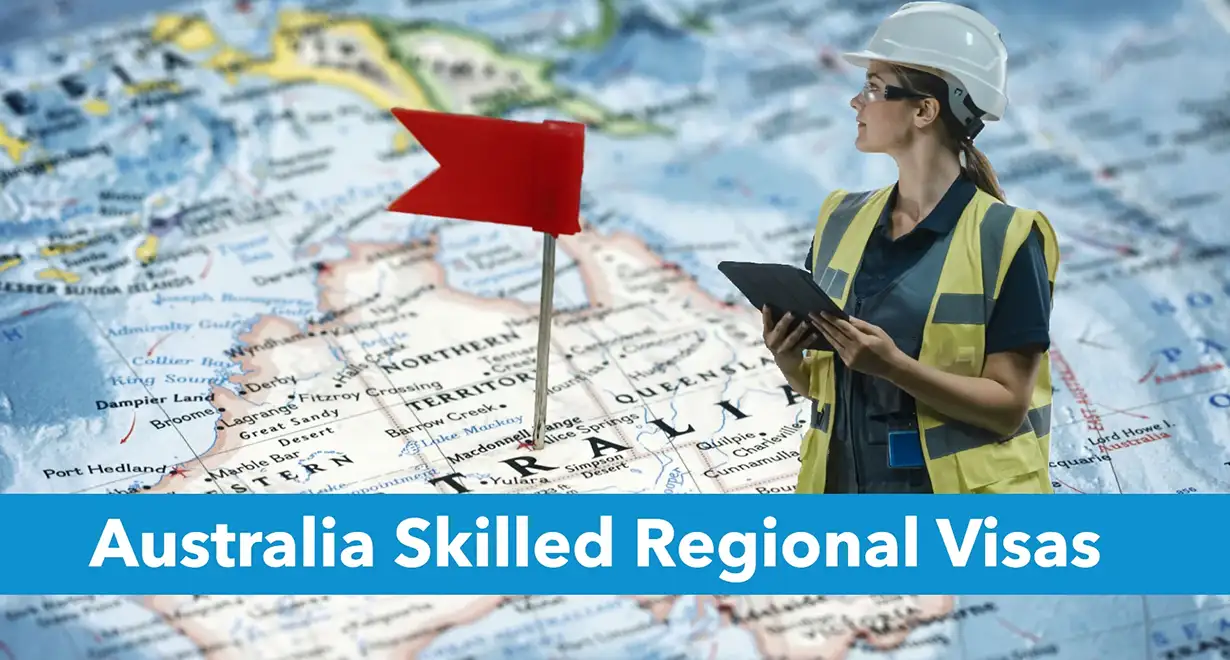Skilled Worker 491 visa
If you are under 45, your occupation and skills appear on Australia’s Skilled Occupation List, and you demonstrate English proficiency at IELTS 7 (or equivalent), we recommend the Australia Subclass 491 visa. The Subclass 491 Skilled Work Regional (Provisional) visa is a five‑year temporary visa that, after three years of residence in regional Australia, allows you to apply for permanent residency.
To qualify, you must score at least 70 points on Australia’s points test and secure either state or family sponsorship (nomination awards an additional 15 points).
To receive professional immigration consultation, please fill out the form below:
This article is your complete 2025 guide to the Australia Subclass 491 visa. If you need personalized advice, please complete our migration assessment form for detailed consultation. For information on other pathways to Australian residency, see our article on migrating to Australia.
What is the Australia Subclass 491 Visa?
The Subclass 491 visa, also known as the Skilled Work Regional (Provisional) visa, is the newest addition to Australia’s skilled‑worker visa family. Introduced in 2019 to replace the Subclass 489 visa, it allows holders to live, work, and study in designated regional areas of Australia for up to five years. After three years of residence in a regional area, you may be eligible to apply for permanent residency under the Subclass 191 visa.
Designated regional areas
Designated regional areas isn’t limited to the uninhabitable outback. Aside from the three major cities—Sydney, Melbourne, and Brisbane—everywhere else in Australia counts as regional. In other words, with a Subclass 491 visa you can live anywhere outside those three cities, whether in a large town, small community, or even the suburbs that border them.
Advantages of the Australia Subclass 491 Skilled Visa
- Live, work, and study in designated regional areas of Australia for up to five years
- Multiple entries to and from Australia during the visa period
- Sponsor your spouse and dependent children to join you in Australia
- After three years’ regional residence, become eligible to apply for permanent residency; after four years, apply for Australian citizenship
- Work in any occupation consistent with your visa conditions
- Access free Medicare health‑care benefits
- Entitlement to unemployment and retirement support
Key Conditions for the Subclass 491 Visa
- Age: 18–44 at time of invitation (minimum 18)
- Qualifications: Diploma or higher in a field related to your nominated occupation
- Points Requirement: Minimum 70 points (65 base + 15 state/family nomination)
- Sponsorship: Mandatory nomination by an Australian state, territory, or eligible family member
- English Language: Minimum IELTS 7 (or equivalent)
- Occupation: Must appear on Australia’s Skilled Occupation List
- Work Experience: At least three years of relevant work experience
Points for the Subclass 491 Visa
You must score at least 65 points out of 100 to lodge an Expression of Interest. State or family nomination adds 15 bonus points, and most competitive applicants aim for 70 or more. Points are awarded as follows:
Age:
- 18–24 years: 25 points
- 25–32 years: 30 points
- 33–39 years: 25 points
- 40–44 years: 15 points
English Language Proficiency:
- Competent (IELTS 6 / TOEFL iBT 64 / PTE 36): 0 points
- Proficient (IELTS 7 / TOEFL iBT 98 / PTE 65): 10 points
- Superior (IELTS 8 / TOEFL iBT 113 / PTE 79): 20 points
Overseas Work Experience (last 10 years):
- Less than 3 years: 0 points
- 3–4 years: 5 points
- 5–7 years: 10 points
- Over 8 years: 15 points
Educational Qualifications:
- Doctorate: 20 points
- Bachelor’s or Master’s degree: 15 points
- Diploma: 10 points
- Trade qualification (Certificate III/IV): 10 points
Accredited Community Language:
- NAATI accreditation or equivalent: 5 points
Marital/Partner Status:
- Single applicant: 10 points
- Partner meets age, English, and work‑experience criteria: 10 points
- Partner has Competent English only: 5 points
State or Family Sponsorship:
- Nomination by an Australian state, territory, or eligible family member: 15 points
Sponsorship Requirements for the Australia Subclass 491 Visa
To obtain the Subclass 491 visa, you must secure sponsorship in Australia. There are two sponsorship Gala Paths:
1. State Sponsorship
Your nominated occupation must appear on the Skilled Occupation List for designated regional areas of Australia.
After you lodge an Expression of Interest (EOI) and reach the required minimum points, regional state governments seeking skilled workers can view and assess your profile.
If a state selects you, it will issue an invitation to apply, after which you may submit your visa application.
2. Family Sponsorship
You may be sponsored by a qualifying relative if you or your spouse has a first‑ or second‑degree family member living in a designated regional area of Australia. Your sponsor must:
- Be one of the following relatives: parent, child or stepchild, full or half sibling, uncle, aunt, nephew, niece, grandparent, or first cousin.
- Be at least 18 years old.
- Hold Australian citizenship, Australian permanent residency, or New Zealand citizenship.
- Reside in a designated regional area of Australia.
Cost of the Australia Subclass 491 Visa
Migrating via the Subclass 491 visa involves government fees and ancillary expenses:
Main Fees (2025)
- Skills assessment: AUD 300–1,500 (varies by occupation and assessing authority)
- State/territory nomination fee: AUD 0–400 (varies by jurisdiction)
- Visa application (primary applicant): AUD 4,770
- Visa application (each dependent aged 18 or over): AUD 2,385
- Visa application (each dependent under 18): AUD 1,190
- Biometrics fee: EUR 41
- Other costs: document translation, embassy fees, airfare, and miscellaneous expenses (all vary)
State and Territory Nomination Fees
- Queensland: AUD 300
- New South Wales: AUD 315
- South Australia: AUD 370
- Tasmania: AUD 300
- Northern Territory: AUD 300
- Australian Capital Territory: AUD 300
- Victoria: free
- Western Australia: free
Important: Most fees are non‑refundable, regardless of application outcome. These figures cover only government charges—you should also budget for migration agent, legal, and other professional fees.
Steps to Obtain the Subclass 491 Visa
- Gather and complete all required documents.
- Confirm your occupation appears on Australia’s Skilled Occupation List.
- Submit your qualifications and work‑experience evidence to the relevant assessing authority (e.g., Engineers Australia, VETASSESS, TRA) and obtain a positive skills assessment.
- Lodge an Expression of Interest (EOI) via SkillSelect, scoring at least 65 points (competitive occupations may require higher). You may update your EOI before invitation to improve your score.
- Secure sponsorship through state/territory nomination or eligible family sponsorship.
- Receive an Invitation to Apply (ITA) via SkillSelect.
- Within 60 days of your ITA, apply online through ImmiAccount—complete all forms, upload supporting documents, and pay visa fees.
- Book and attend your biometrics appointment (you’ll receive scheduling instructions from the Department of Home Affairs via VFS).
- Await the Department of Home Affairs’ final decision. If approved, your Subclass 491 visa is granted.
- Migrate to Australia and begin your new life in a regional community!
Conclusion
The Subclass 491 visa is one of Australia’s regional skilled‑worker visas, introduced in 2019. Despite its provisional status and relative newness, it remains an excellent option if you have in‑demand skills and wish to migrate to Australia for work. This visa allows you to live, work, and study in designated regional areas for up to five years, and after three years you become eligible to apply for permanent residency.
A key requirement is securing sponsorship—either from an Australian state or territory government or from an eligible family member living in a designated regional area—and scoring at least 70 points on the points test.



